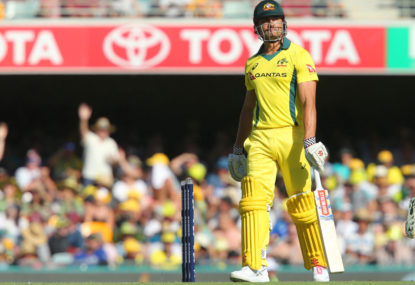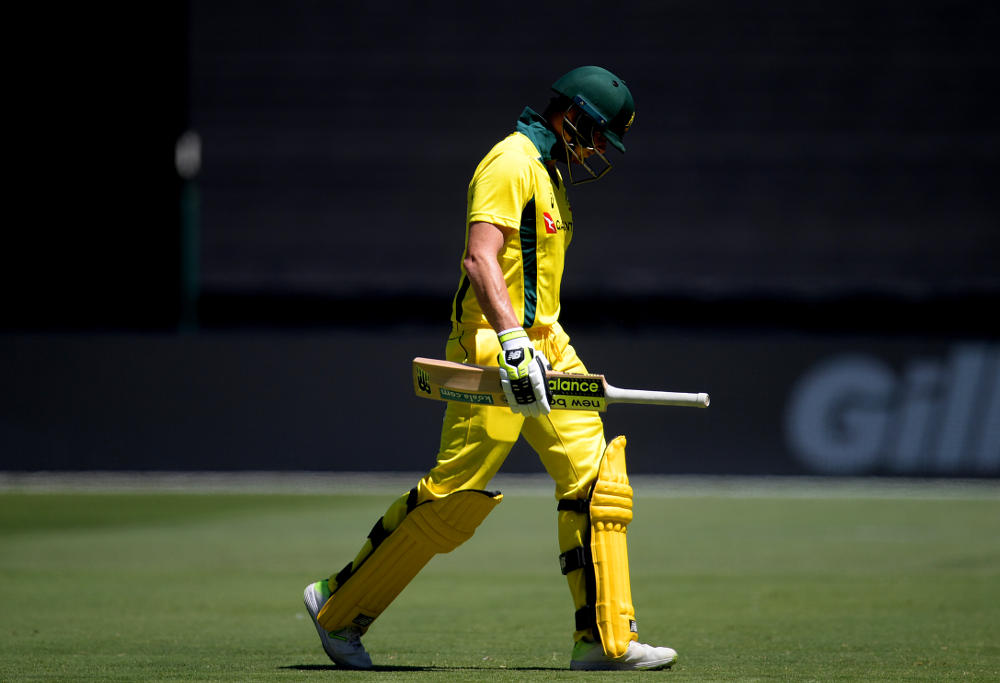Stoinis clubs stunning IPL ton, makes tough chase look a cinch with clutch final-over barrage
Marcus Stoinis produced his first IPL century and it was a beauty. He went 6, 4, 4, 4 to finish off the Lucknow Super…

It is times like these when the temptation arises to draw a discreet veil over the very existence of the 50-over version of cricket.
It’s already well established that the in-between format is the game’s least fashionable: just as sprinters become superstars and marathon runners inspire awe while the 800m fails to arouse any reaction in anyone, so does the ODI sit frumpily between the epic battlefield of the Test match and the all-ages rave of T20.
In a nutshell, ODIs are easy to ignore, and with Australia at one of its lowest ebbs in the format, it’s tempting to do just that. It would be such a relief to declare that the world has moved on from the outdated and obsolete 50-over game, and the Australian team has done the same, concentrating on building capacity in the important versions, so that defeat in this series means less than nothing. Just a way to pass an idle few afternoons, for our beloved national side, focused as they are on the big issues.
But how can we, as Australians, take this approach in good conscience? Fifty-over cricket is an inseparable part of the Australian cricketing character. There was a time when the shorter form seemed to be a sloughing off of the dead skin of tradition, but now it’s undeniable that, for Australian cricket fans, ODIs carry a proud tradition of their own that none of us can renounce if we are to stay true to the noble history of our nation.
It’s the proud history that makes a trough like the one Steve Smith’s team is currently experiencing so galling – if, in the wake of the Warne-McGrath-Gilchrist era, the experience of watching the Test team lose came as a shock to the system, an inept Australian one-day side feels like some kind of violation of divine law.
After all, are we not the nation that has five World Cups to its credit, where no other has more than two? Are we not the nation that ushered in the pyjama game in the first place with World Series Cricket? Are we not the nation that brought the world Dean Jones and Adam Gilchrist and Michael Bevan and Andrew Symonds and Anthony Stuart?
The one-day game courses through the veins of our cricketing corpus, and it would be a crying shame if Australia’s cricketing self-image lost that part forever entwined with the ODI.
But we seem at risk of that happening, and from observation of the first three disastrous matches of the current series, the only explanation available seems to be this: Australia has forgotten how to play one-day cricket.

(AAP Image/Tracey Nearmy)
It’s not necessarily difficult to understand. Steve Smith was, after all, consumed body and soul by the desire to regain the Ashes. He committed himself unstintingly to the task of not only winning the Test series, but placing himself at the vanguard. He bent the series to his will, by bending himself to the needs of Test cricket. One way or another, all of his charges did: Dave Warner was disciplined and circumspect; Pat Cummins was hostile; Mitch Marsh displayed a maturity few thought within his character.
But what if Smith, and his loyal band, gave themselves so utterly to the Ashes cause, that the rhythms and instincts of the shorter game have been pushed to an inaccessible recess of the psyche? Watching the Australians at work in those first three games has been to observe a group of men puzzled by the job in front of them and bewildered by how swiftly and how easily their opponents have breezed by them.
The England team have played like men liberated; Australia has looked like an ageing gunfighter trying to remember which side the holster’s on.
Certain selections may not have helped. Cameron White has carried out his primary function – that of putting Glenn Maxwell in his place – beautifully. The secondary function of actually playing cricket? Not so well. The absence of spin options in the team has hurt.
But even those who have an undeniable claim on their places in the team have been struggling to make sense of the format that delivers neither urns nor IPL contracts. Warner is a lost boy waiting for muscle memory to kick in. Cummins bowled with fire and vigour and completely forgot that the death overs are a different game, allowing Jos Buttler to smear him over the SCG turf. Mitchell Starc has picked up wickets but also served up delicious treats to batsmen’s hitting zones.
And Smith himself… where the Test batsman was all certainty and steely resolve, the same man in yellow and green is drowning in hesitation and choking on the endless self-admonitions every time another shot fails unerringly to find a gap. He is driven by the urge to dominate, but here he has been dominated, and England’s 50-over attack is a lock he can’t find a key to.
The situation is not terminal. A loss in a domestic five-match series is not calamity. The only prize of lasting importance that the one-day format offers is the World Cup, and there is plenty of time for Australia to regain its lost senses by then.
That process must start with the recognition of the game they are playing. It’s not a Test match. It’s not the BBL. It’s a 50-over one-day international, and it’s a game at whose pinnacle Australia belongs.